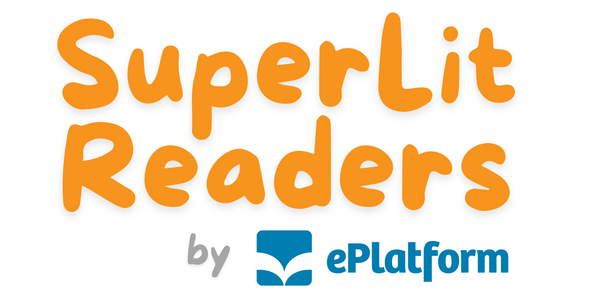What is Synthetic Phonics and How Do You Teach It?

🕐 Estimated reading time: 7 minutes | Last updated: June 2025
Synthetic phonics is one of the most effective ways to teach children how to read, but many parents and teachers still wonder exactly what it is and how it works. If you’re new to phonics, don’t worry. This guide explains what synthetic phonics means, why it’s so powerful, and how you can teach it step by step, whether you’re at home or in the classroom.
Table of Contents
- What does ‘synthetic phonics’ mean?
- Why is synthetic phonics so effective?
- How to teach synthetic phonics
- What are decodable readers and why do they matter?
- Tips for parents teaching phonics at home
- Final thoughts
What does ‘synthetic phonics’ mean?
Let’s break it down: ‘synthetic’ means to put things together. In this case, it’s all about putting sounds together to build words. With synthetic phonics, children learn individual letter sounds (called phonemes) and then blend those sounds to read whole words.
This approach is different from the old ‘look and say’ or whole-word methods, which asked kids to memorise entire words. Synthetic phonics gives children a toolkit they can use to decode new words they’ve never seen before.
When students know how to blend, they can tackle any new word with confidence. That’s why it’s called a ‘synthetic’ method, they synthesise, or combine, the parts.
Why is synthetic phonics so effective?
There’s a reason why schools worldwide have shifted to synthetic phonics: it works. The science of reading shows that young brains learn to read best when they’re taught how to decode sounds in a clear, step-by-step way.
A good synthetic phonics program does more than just teach sounds, it builds mastery through repetition and meaningful practice. Children make faster progress when they:
- Learn the smallest sounds (phonemes) and the letters that represent them.
- Blend and segment sounds confidently to read and write.
- Practise reading books that only include the sounds they’ve learned so far.
- Review and revisit to strengthen memory and fluency.
When children know how to break words down and put them back together, they don’t have to guess or memorise huge lists. They build real skills they can apply to every new word they see.
Synthetic phonics turns “I can’t read that” into “I know how to figure it out.”
How to teach synthetic phonics
Teaching synthetic phonics can feel overwhelming if you’ve never done it before, but it doesn’t need to be. The key is to keep it systematic, explicit, and consistent. Start simple and build gradually.
Begin by introducing just a few letter sounds at a time. Make sure children hear, see, and say each sound clearly. Use plenty of repetition, kids love routines and learn best when they know what to expect.
Then, help children:
- Practise saying the sounds on their own and with others.
- Blend sounds to read simple words aloud.
- Break words apart (segmenting) to spell and write them correctly.
The goal isn’t to rush but to master each step. Short, daily lessons, even 10–15 minutes, can build strong reading habits. Over time, these small steps add up to huge gains in reading confidence.
Keep it fun and interactive, and remember: it’s OK to revisit tricky sounds as often as needed.
What are decodable readers and why do they matter?
One of the biggest mistakes schools and parents make is giving kids books with too many words they can’t sound out. This leads to frustration and guessing, which slows down progress.
Decodable readers fix this. These special books are written to match exactly what children have learned so far in their phonics program. That means they won’t bump into tricky words they haven’t been taught yet.
When children read decodable books:
- They practise blending and decoding skills in real sentences.
- They gain confidence because they can read independently.
- They build fluency by seeing the same patterns over and over again.
Decodable readers take the guesswork out of early reading. They help kids experience success from the very first page. And when children feel successful, they want to keep reading, which is exactly what we want.
Tips for parents teaching phonics at home
Parents play a huge role in reinforcing synthetic phonics outside the classroom. The good news? You don’t need fancy training or expensive tools, just a few minutes each day and a bit of know-how.
Keep your phonics practice short, simple, and playful. Small bursts of daily practice are more effective than long sessions once a week. Here’s how to keep it fun and effective at home:
- Stick to 5–10 minute practice blocks, focused on one or two sounds.
- Play blending games with simple words or flashcards.
- Read decodable books together and celebrate each finished page.
- Praise effort, every sound, word, or page read is worth celebrating!
The goal isn’t perfection; it’s progress. Be patient, stay positive, and enjoy watching your child grow into a confident reader.
Final thoughts
Synthetic phonics is more than a buzzword, it’s a proven, practical approach that gives every child the skills they need to read confidently for life. When kids master sounds step by step and practise with decodable books, they build the fluency and love of reading we all want for them.
With SuperLit Readers by ePlatform, every book is designed to match the systematic synthetic phonics approach. Each level aligns with the sounds your child is learning, so they get just-right practice every time they open a book.
Ready to help your child unlock the world of reading? Explore our decodable book collections and make synthetic phonics simple, fun, and effective at home or in the classroom.




